Air Conditioning system and types
Download as PPTX, PDF7 likes1,245 views
The document discusses different types of air conditioning systems. It begins with introductions to air conditioning principles and the cooling cycle. It then describes four main types of air conditioning systems: window units, split systems, centralized systems, and packaged units. Window units have all components in one casing, while split systems separate indoor and outdoor components. Centralized systems serve whole homes through ductwork. Packaged units can cool entire buildings and contain heating systems.
1 of 27
Downloaded 49 times
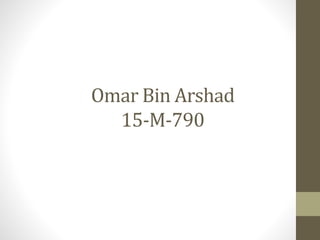


























Recommended
A.C. Duct



A.C. DuctDhruv Shah
Ěý
This document discusses air conditioning ducts. It describes the functions of ducts as transmitting air from air handling units to conditioned spaces and properly distributing air. Ducts are classified by velocity, pressure, and air type. General design rules include conveying air directly to save space and power, avoiding sudden changes in direction, and keeping the aspect ratio close to 1. Factors affecting duct design include heat gain/loss and friction. Common duct materials are GI sheet, aluminum, stainless steel, and fiberglass. Dynamic losses occur due to changes in air direction or velocity. The two main duct design methods are the velocity reduction method and equal pressure drop method.Air distribution Product



Air distribution ProductAshutosh kumar Dubey
Ěý
The document discusses the components and design of air distribution systems in HVAC. It describes the different types of ducts based on shape, pressure, velocity, and materials used. Rectangular, round, and oval ducts are common shapes. Ducts can be high, medium, or low pressure and high or low velocity. Common duct materials include galvanized steel, aluminum, pre-insulated, and fabric. Duct joints include slip joints, drive slips, and flange joints. The document also discusses outlet types like grilles and diffusers, as well as air filters used to remove particles from the air flow. Proper sizing and design of ducts, outlets, and filters are important for effectiveAir conditioning system



Air conditioning systemanojan kanagarathnam
Ěý
The document discusses the components and process of an air conditioning system. It describes the key elements as the compressor, condenser, expansion valve, and evaporator. The refrigerant gas flows in a cycle between these components, being compressed into a hot gas in the compressor, condensed into a liquid in the condenser, expanded in the expansion valve, and evaporated to absorb heat in the evaporator. There are different types of air conditioning systems including room, package, and central systems.Central ac 



Central ac Asrar alam
Ěý
Central ac is explained very well.this ppt includes working,types of ac,advantages,disadvantages,applications etcHvac duct design



Hvac duct designYounes EL AME
Ěý
This document discusses duct design for HVAC systems. It defines different types of ducts including supply, return, fresh air, and exhaust ducts. It also covers duct classification based on velocity and pressure, duct shapes, sizing methods like equal friction and static regain, and standard duct sizes for different air flows. Design considerations include aspect ratio, static versus dynamic pressure, and pressure losses from friction and changes in air flow.Airconditioning ppt



Airconditioning pptAamir Farhan Sheikh
Ěý
This document provides information on ventilation and air conditioning systems for buildings. It discusses the importance of ventilation to remove stale air and introduce fresh air. Natural ventilation relies on wind and stack effects, while mechanical ventilation uses fans. Central air conditioning systems condition air at a central plant and distribute via ducts, while split systems have indoor and outdoor components. Proper selection of heating, cooling, and ventilation equipment requires balancing multiple factors like energy efficiency and indoor air quality.H.V.A.C building service in b.arch ciriculam



H.V.A.C building service in b.arch ciriculamKethees Waran
Ěý
This document provides an overview of heating, ventilation, and air conditioning (HVAC) systems. It discusses key thermodynamic concepts like sensible and latent heat. It also describes different types of HVAC systems like central forced air, hot water, zoned control, and radiant heat systems. Specific components of HVAC systems are explained, such as air handling units, furnaces, boilers, chillers, ductwork, diffusers, and air curtains. Refrigerants are defined and their numbering system is outlined. HVAC plans and mechanical drawings are also briefly mentioned.AIR CONDITIONING SYSTEM DESINGING



AIR CONDITIONING SYSTEM DESINGINGINDUSTRIAL ENGINEERING
Ěý
Ramesh Kumar Sharma presented on HVAC systems for green buildings. He discussed centralized and localized AC options like chilled water, DX, VRF systems. He covered GRIHA rating criteria and designing efficient HVAC systems using techniques like variable speed pumps and fans, optimized insulation and refrigerants. NTPC is aiming for minimum 3-star GRIHA rating in all upcoming project buildings.central air conditioning system



central air conditioning systemUiTM Shah Alam
Ěý
The document provides information about a group assignment for a central air conditioning system. It includes definitions of air conditioning and central air conditioning systems. It describes the typical components of a central AC system such as the compressor, air handling unit, return air inlets, cool air dispenser, condenser, and cooling tower. It provides a case study of a water-cooled condenser and explains the cooling process within the condenser and cooling tower. Common problems, maintenance requirements, and advantages/disadvantages of central AC systems are also summarized.Heating and Air Conditioning 



Heating and Air Conditioning haroldtaylor1113
Ěý
This is an overview of introduction of heating and air conditioning condition sytem in the application of civil and architectural works.Air Conditioning Systems in Refrigeration and Air Conditioning



Air Conditioning Systems in Refrigeration and Air ConditioningAjaypalsinh Barad
Ěý
The ppt contains detailed study of all Air Conditioning Systems with neat sketches and description. It is well formed as per the syllabus of GTU.Water Chilled Airconditioning



Water Chilled AirconditioningAljon Altiche
Ěý
The document provides information about chilled water air conditioning systems including:
- They use water as the secondary refrigerant which is chilled by a chiller and circulated through buildings to absorb heat.
- Common applications include large buildings like offices, factories, and some homes.
- The chiller cools water to 40-45°F which is then piped through the building to air handlers that act like evaporator coils.
- Key components of the system include the water chiller, cooling tower, air handlers, fan coil units, and expansion tank.Packaged air conditioners 



Packaged air conditioners Ar.ADITYA GOEL
Ěý
This document provides information about packaged air conditioners. It begins by defining a ton of refrigeration and providing an example calculation for selecting the appropriate size for a room. It then explains that packaged air conditioners are used for cooling capacities between 5-20 tons. The main components of packaged air conditioners, including the compressor, cooling coil, and air handling unit, are enclosed in a single casing. There are two main types - water cooled and air cooled - which only differ in their condenser type. Water cooled units use a shell and tube condenser cooled by water, while air cooled units use an outdoor condenser cooled by atmospheric air. The document concludes by listing some benefits of packaged air conditioners like space efficiency and quickHvac



Hvacmunir sharif
Ěý
HVAC systems are designed to heat, cool, and ventilate indoor spaces for human comfort. Heating increases temperature while cooling decreases it. Ventilation maintains indoor air quality through exhaust and fresh air. Air conditioning alters temperature, humidity, and air quality. Common HVAC systems include window units for single rooms, split units with indoor and outdoor components, packaged units for medium loads, and central air for large buildings. Vapor compression is the most widely used refrigeration cycle, involving an evaporator, compressor, condenser, and expansion valve.Hvac - presentation (Air conditioning presentation) 



Hvac - presentation (Air conditioning presentation) SYED KHURSHID ALAM ARZOO
Ěý
General overview of HVAC Technology
General overview of VRF Technology
Benefits of VRF
General overview of Refrigerant
General overview of Ton
General overview of Compressor
Heating Ventilation & Air Conditioning (HVAC)



Heating Ventilation & Air Conditioning (HVAC)Joshua Joel
Ěý
The document provides an overview of HVAC (heating, ventilation, and air conditioning) systems. It discusses key components such as furnaces, heat exchangers, evaporator coils, condensing units, ducts, vents, and thermostats. It explains how HVAC systems work to moderate interior temperatures through heating in winter and cooling in summer. Performance metrics for HVAC systems like efficiency, EER, and SEER are also defined.Types of air conditioning systems



Types of air conditioning systemsbecoolseo
Ěý
By http://be-cool.in/ - There are various types of air conditioning systems. The application of a particular type of system depends upon a number of factors like how large the area is to be cooled, the total heat generated inside the enclosed area, etc. An HVAC designer would consider all the related parameters and suggest the system most suitable for your space.
Split Air Conditioner
Window Air Conditioner
Packaged Air Conditioner
Central Air Conditioning SystemDuct design .ppt



Duct design .pptCollege
Ěý
This document discusses duct design considerations for a mechanical engineering project. It covers various duct shapes and sizes, materials, air distribution systems, diffusers and other components. Rectangular ducts are generally more energy efficient than round ducts. Distribution systems discussed include above ceiling, displacement and underfloor. Displacement systems aim to deliver conditioned air directly to the occupied zone without mixing. The document provides information on duct aspects, velocities, pressures and various design tradeoffs to consider for ductwork.Air Conditioning & Hvac Systems



Air Conditioning & Hvac SystemsGAURAV. H .TANDON
Ěý
This document discusses ventilation and HVAC systems. It defines ventilation and explains why it is important for human respiration, diluting odors, removing combustion products, and providing a comfortable thermal environment. It describes natural and artificial ventilation systems. For artificial systems, it covers exhaust, plenum, exhaust-plenum, evaporative cooling, air conditioning, and different types of HVAC equipment. It emphasizes the functional requirements of an effective ventilation system.Human thermal comfort



Human thermal comfortKAPIL WADKAR
Ěý
Thermal comfort is difficult to measure as it is subjective and depends on factors like air temperature, humidity, radiant temperature, air velocity, metabolic rates, and clothing levels. Key factors that influence human comfort include metabolic rate, clothing insulation, air temperature, radiant temperature, air velocity, humidity, and personal characteristics. Maintaining thermal comfort is important for energy efficiency as uncomfortable occupants may use space heaters or AC instead of centralized HVAC systems.Air conditioning system 



Air conditioning system Educational Learner
Ěý
This document discusses different types of air conditioning systems and their components. It introduces window units, split units, central air conditioning, and packaged units. It then covers the cooling cycle/refrigeration cycle involving the compressor, condenser, expansion valve, and evaporator. District cooling systems and chilled beam systems are also introduced as newer technologies. The coolant used in air conditioning systems must be non-toxic, non-explosive, non-corrosive, and have high electrical resistance while effectively lubricating components. Common coolants mentioned include R-22, R-12, and R-11.Chiller water systems



Chiller water systemsRIDDHESH VARIK
Ěý
The document discusses chilled water air conditioning systems. It describes how chilled water systems work by using a chiller to cool water which is then circulated through air handlers to cool air in a building. It lists the main components of chilled water systems including chillers, evaporators, condensers, cooling towers, and air handlers. Diagrams are also included showing how the refrigerant and chilled water flow through the different parts of the system. Key advantages discussed are that only water is lost if piping leaks and refrigerant is not piped throughout the building.Central Ac Powerpoint



Central Ac PowerpointAtul Jethmalani
Ěý
This document discusses central air conditioning systems. It introduces the authors and defines air conditioning as cooling and dehumidifying indoor air for thermal comfort. It describes the main components of a central air conditioning system, which includes a two-stage compressor, condensing unit, evaporating unit known as an air handling unit, ducts, filters, thermostats, and optional auxiliary units. The document distinguishes between comfort air conditioning for buildings and process air conditioning designed for specific industrial processes.Central Air Conditioning Systems



Central Air Conditioning SystemsJustin
Ěý
The document compares and describes two types of central air conditioning systems: direct expansion (DX) systems and chilled water systems. DX systems directly cool room air with refrigerant in the air handling unit, making them more efficient over shorter distances. Chilled water systems use a central plant to chill water, which is then circulated to air handling units to cool room air over larger buildings and distances. Key components of each system like compressors, condensers, cooling coils, and ductwork are explained.Building air con. system



Building air con. systemutsavkhatri1
Ěý
The document discusses air conditioning systems. It begins with definitions of air conditioning and its purpose of altering air properties like temperature and humidity for comfort or industrial processes. It then discusses the history of air conditioning and its inventor Willis Carrier in 1902. The document outlines different types of air conditioning like comfort cooling and industrial cooling. It discusses factors for human comfort like temperature, humidity and air velocity. It explains the basic elements of an air conditioning system including the compressor, condenser, expansion valve and evaporator. It concludes by describing different air conditioning system types like window units, split systems, central systems and package units. It also discusses new technologies like district cooling systems and chilled beam systems.Architecture - Centralized Air Conditioning System 



Architecture - Centralized Air Conditioning System SilkThreadJewellery
Ěý
Its the detailed process of the Centralized Air conditioning system. It is the apt notes required for architecture students. It has the components and sub topics with the detailed explanation of the mechanism of how it works Hydronic heating & cooling system design presentation



Hydronic heating & cooling system design presentationkshitiz pandit
Ěý
This Presentation is themed of hydronic heating and cooling system design, basically for energy efficient building design.Air conditioning



Air conditioningAndhra University
Ěý
There are several types of air conditioning systems:
- Room air conditioning uses a single wall-mounted unit.
- Split systems have indoor and outdoor units connected by refrigerant lines.
- Window units install in an open window.
- Packaged units have components enclosed in one casing.
- Central systems have chillers and water towers that serve multiple air handlers in a building.CHAP 4 HVAC.pdf



CHAP 4 HVAC.pdfMuhammadFarisBinNord
Ěý
The document discusses heating, ventilation, and air conditioning (HVAC) systems and indoor air quality. It describes how HVAC systems work and the components involved, including the refrigeration cycle, air handling units, ducting, and different system types like window units, split units, and central air conditioning. It also discusses factors that affect indoor air quality like temperature, humidity, airflow, and maintenance of HVAC equipment. Poor indoor air quality can cause health issues and impact productivity.More Related Content
What's hot (20)
central air conditioning system



central air conditioning systemUiTM Shah Alam
Ěý
The document provides information about a group assignment for a central air conditioning system. It includes definitions of air conditioning and central air conditioning systems. It describes the typical components of a central AC system such as the compressor, air handling unit, return air inlets, cool air dispenser, condenser, and cooling tower. It provides a case study of a water-cooled condenser and explains the cooling process within the condenser and cooling tower. Common problems, maintenance requirements, and advantages/disadvantages of central AC systems are also summarized.Heating and Air Conditioning 



Heating and Air Conditioning haroldtaylor1113
Ěý
This is an overview of introduction of heating and air conditioning condition sytem in the application of civil and architectural works.Air Conditioning Systems in Refrigeration and Air Conditioning



Air Conditioning Systems in Refrigeration and Air ConditioningAjaypalsinh Barad
Ěý
The ppt contains detailed study of all Air Conditioning Systems with neat sketches and description. It is well formed as per the syllabus of GTU.Water Chilled Airconditioning



Water Chilled AirconditioningAljon Altiche
Ěý
The document provides information about chilled water air conditioning systems including:
- They use water as the secondary refrigerant which is chilled by a chiller and circulated through buildings to absorb heat.
- Common applications include large buildings like offices, factories, and some homes.
- The chiller cools water to 40-45°F which is then piped through the building to air handlers that act like evaporator coils.
- Key components of the system include the water chiller, cooling tower, air handlers, fan coil units, and expansion tank.Packaged air conditioners 



Packaged air conditioners Ar.ADITYA GOEL
Ěý
This document provides information about packaged air conditioners. It begins by defining a ton of refrigeration and providing an example calculation for selecting the appropriate size for a room. It then explains that packaged air conditioners are used for cooling capacities between 5-20 tons. The main components of packaged air conditioners, including the compressor, cooling coil, and air handling unit, are enclosed in a single casing. There are two main types - water cooled and air cooled - which only differ in their condenser type. Water cooled units use a shell and tube condenser cooled by water, while air cooled units use an outdoor condenser cooled by atmospheric air. The document concludes by listing some benefits of packaged air conditioners like space efficiency and quickHvac



Hvacmunir sharif
Ěý
HVAC systems are designed to heat, cool, and ventilate indoor spaces for human comfort. Heating increases temperature while cooling decreases it. Ventilation maintains indoor air quality through exhaust and fresh air. Air conditioning alters temperature, humidity, and air quality. Common HVAC systems include window units for single rooms, split units with indoor and outdoor components, packaged units for medium loads, and central air for large buildings. Vapor compression is the most widely used refrigeration cycle, involving an evaporator, compressor, condenser, and expansion valve.Hvac - presentation (Air conditioning presentation) 



Hvac - presentation (Air conditioning presentation) SYED KHURSHID ALAM ARZOO
Ěý
General overview of HVAC Technology
General overview of VRF Technology
Benefits of VRF
General overview of Refrigerant
General overview of Ton
General overview of Compressor
Heating Ventilation & Air Conditioning (HVAC)



Heating Ventilation & Air Conditioning (HVAC)Joshua Joel
Ěý
The document provides an overview of HVAC (heating, ventilation, and air conditioning) systems. It discusses key components such as furnaces, heat exchangers, evaporator coils, condensing units, ducts, vents, and thermostats. It explains how HVAC systems work to moderate interior temperatures through heating in winter and cooling in summer. Performance metrics for HVAC systems like efficiency, EER, and SEER are also defined.Types of air conditioning systems



Types of air conditioning systemsbecoolseo
Ěý
By http://be-cool.in/ - There are various types of air conditioning systems. The application of a particular type of system depends upon a number of factors like how large the area is to be cooled, the total heat generated inside the enclosed area, etc. An HVAC designer would consider all the related parameters and suggest the system most suitable for your space.
Split Air Conditioner
Window Air Conditioner
Packaged Air Conditioner
Central Air Conditioning SystemDuct design .ppt



Duct design .pptCollege
Ěý
This document discusses duct design considerations for a mechanical engineering project. It covers various duct shapes and sizes, materials, air distribution systems, diffusers and other components. Rectangular ducts are generally more energy efficient than round ducts. Distribution systems discussed include above ceiling, displacement and underfloor. Displacement systems aim to deliver conditioned air directly to the occupied zone without mixing. The document provides information on duct aspects, velocities, pressures and various design tradeoffs to consider for ductwork.Air Conditioning & Hvac Systems



Air Conditioning & Hvac SystemsGAURAV. H .TANDON
Ěý
This document discusses ventilation and HVAC systems. It defines ventilation and explains why it is important for human respiration, diluting odors, removing combustion products, and providing a comfortable thermal environment. It describes natural and artificial ventilation systems. For artificial systems, it covers exhaust, plenum, exhaust-plenum, evaporative cooling, air conditioning, and different types of HVAC equipment. It emphasizes the functional requirements of an effective ventilation system.Human thermal comfort



Human thermal comfortKAPIL WADKAR
Ěý
Thermal comfort is difficult to measure as it is subjective and depends on factors like air temperature, humidity, radiant temperature, air velocity, metabolic rates, and clothing levels. Key factors that influence human comfort include metabolic rate, clothing insulation, air temperature, radiant temperature, air velocity, humidity, and personal characteristics. Maintaining thermal comfort is important for energy efficiency as uncomfortable occupants may use space heaters or AC instead of centralized HVAC systems.Air conditioning system 



Air conditioning system Educational Learner
Ěý
This document discusses different types of air conditioning systems and their components. It introduces window units, split units, central air conditioning, and packaged units. It then covers the cooling cycle/refrigeration cycle involving the compressor, condenser, expansion valve, and evaporator. District cooling systems and chilled beam systems are also introduced as newer technologies. The coolant used in air conditioning systems must be non-toxic, non-explosive, non-corrosive, and have high electrical resistance while effectively lubricating components. Common coolants mentioned include R-22, R-12, and R-11.Chiller water systems



Chiller water systemsRIDDHESH VARIK
Ěý
The document discusses chilled water air conditioning systems. It describes how chilled water systems work by using a chiller to cool water which is then circulated through air handlers to cool air in a building. It lists the main components of chilled water systems including chillers, evaporators, condensers, cooling towers, and air handlers. Diagrams are also included showing how the refrigerant and chilled water flow through the different parts of the system. Key advantages discussed are that only water is lost if piping leaks and refrigerant is not piped throughout the building.Central Ac Powerpoint



Central Ac PowerpointAtul Jethmalani
Ěý
This document discusses central air conditioning systems. It introduces the authors and defines air conditioning as cooling and dehumidifying indoor air for thermal comfort. It describes the main components of a central air conditioning system, which includes a two-stage compressor, condensing unit, evaporating unit known as an air handling unit, ducts, filters, thermostats, and optional auxiliary units. The document distinguishes between comfort air conditioning for buildings and process air conditioning designed for specific industrial processes.Central Air Conditioning Systems



Central Air Conditioning SystemsJustin
Ěý
The document compares and describes two types of central air conditioning systems: direct expansion (DX) systems and chilled water systems. DX systems directly cool room air with refrigerant in the air handling unit, making them more efficient over shorter distances. Chilled water systems use a central plant to chill water, which is then circulated to air handling units to cool room air over larger buildings and distances. Key components of each system like compressors, condensers, cooling coils, and ductwork are explained.Building air con. system



Building air con. systemutsavkhatri1
Ěý
The document discusses air conditioning systems. It begins with definitions of air conditioning and its purpose of altering air properties like temperature and humidity for comfort or industrial processes. It then discusses the history of air conditioning and its inventor Willis Carrier in 1902. The document outlines different types of air conditioning like comfort cooling and industrial cooling. It discusses factors for human comfort like temperature, humidity and air velocity. It explains the basic elements of an air conditioning system including the compressor, condenser, expansion valve and evaporator. It concludes by describing different air conditioning system types like window units, split systems, central systems and package units. It also discusses new technologies like district cooling systems and chilled beam systems.Architecture - Centralized Air Conditioning System 



Architecture - Centralized Air Conditioning System SilkThreadJewellery
Ěý
Its the detailed process of the Centralized Air conditioning system. It is the apt notes required for architecture students. It has the components and sub topics with the detailed explanation of the mechanism of how it works Hydronic heating & cooling system design presentation



Hydronic heating & cooling system design presentationkshitiz pandit
Ěý
This Presentation is themed of hydronic heating and cooling system design, basically for energy efficient building design.Air conditioning



Air conditioningAndhra University
Ěý
There are several types of air conditioning systems:
- Room air conditioning uses a single wall-mounted unit.
- Split systems have indoor and outdoor units connected by refrigerant lines.
- Window units install in an open window.
- Packaged units have components enclosed in one casing.
- Central systems have chillers and water towers that serve multiple air handlers in a building.Similar to Air Conditioning system and types (20)
CHAP 4 HVAC.pdf



CHAP 4 HVAC.pdfMuhammadFarisBinNord
Ěý
The document discusses heating, ventilation, and air conditioning (HVAC) systems and indoor air quality. It describes how HVAC systems work and the components involved, including the refrigeration cycle, air handling units, ducting, and different system types like window units, split units, and central air conditioning. It also discusses factors that affect indoor air quality like temperature, humidity, airflow, and maintenance of HVAC equipment. Poor indoor air quality can cause health issues and impact productivity.HVAC - by Anoushka Aggarwal



HVAC - by Anoushka AggarwalANOUSHKAAggarwal
Ěý
This document provides information on HVAC (heating, ventilation, and air conditioning) systems. It discusses the history and basics of air conditioning, including the five parameters controlled by AC units. The key components of AC systems, including the evaporator, condenser, compressor, fan, and expansion valve, are described. Different types of HVAC systems are classified and explained, such as central AC, heat pumps, VRF systems, chilled water systems, window units, split units, and types of split units. Factors to consider for HVAC system design are also listed.Air conditioning system



Air conditioning systemDevesh Tripathi
Ěý
The document discusses an air conditioning system. It begins by defining air conditioning and its key components and principles. It then describes the components of an air conditioner including the blower, evaporator coil, compressor, condensing coil, fan, air filter, and thermostat. It explains the refrigeration cycle and includes a diagram. It also discusses different air conditioning system types, components of central air conditioning like the air handling unit and cooling tower, and concludes with descriptions of the air distribution system components like fans, filters, ductwork, outlets, and dampers.S3 Lec 6 (Air Distribution) Note



S3 Lec 6 (Air Distribution) Noteno suhaila
Ěý
This document discusses supply devices and room air distribution in HVAC systems. It describes the basic components of forced air systems including blowers, air supply systems, filters, dampers, return air systems, and registers. It also discusses different types of fans used in HVAC like propeller fans, centrifugal fans, and axial fans. Finally, it provides an overview of additional HVAC equipment, air distribution methods, and improved ventilation strategies.HVAC



HVACRanjitBhatnagar4
Ěý
Heating, ventilation, and air conditioning (HVAC) systems are used to control temperature, humidity, and air quality in enclosed spaces. The goal is to provide thermal comfort and indoor air quality. HVAC systems have several key components, including a furnace or heating unit, air filters, a heat exchanger, refrigerant lines, a condensing unit, an evaporator coil, ductwork, and vents. Together, these components use the refrigeration cycle of compression, condensation, expansion, and evaporation to transfer heat between indoor and outdoor air and maintain comfortable indoor conditions. There are various types of HVAC systems that provide heating and cooling through different methods like central heating/cooling, portable units, andAc Service at Home



Ac Service at HomeDenmozhiS
Ěý
Used for chilling huge spaces such as your home or business. The packaging unit can be configured in two ways. The compressor, condenser (which can be air or water-cooled), expansion valve, and evaporator are all placed in a single box in the first one. The chilled air is blown by the large capacity blower and passes via the ducts that are installed throughout the rooms. In the second configuration, the compressor and condenser are placed in the same shell. The pressurized gas is routed through specific devices in various rooms, which include the expansion valve and cooling coil. In Coimbatore, we handle all sorts of AC repairs.HVAC System



HVAC SystemAroh Thombre
Ěý
The document discusses heating, ventilation, and air conditioning (HVAC) systems. It defines HVAC and explains why these systems are needed, such as to control temperature and humidity for human comfort. It then describes various HVAC terminology like dry-bulb temperature and wet-bulb temperature. The document also discusses different types of air conditioning systems like packaged, centralized, split, and window units. It provides diagrams of typical HVAC and refrigeration cycles. Key HVAC components like air handling units, compressors, condensers, and evaporators are also explained.hvac systems basic components



hvac systems basic componentsWEGIGASIM1
Ěý
This document describes the five primary loops that make up HVAC systems: the airside loop, chilled-water loop, refrigeration loop, heat-rejection loop, and controls loop. It provides examples of common components in each loop, such as supply fans, cooling coils, pumps, and condensers. Control of these components is coordinated by a central building automation system to ensure efficient system operation.Hvac systems-components



Hvac systems-componentsAmit Kumar
Ěý
This document describes the five primary loops that make up HVAC systems: the airside loop, chilled-water loop, refrigeration loop, heat-rejection loop, and controls loop. It provides examples of common components in each loop, such as supply fans, cooling coils, pumps, and condensers. Control of these components is coordinated by a central building automation system to ensure efficient system operation.hvac-systems-components 2023.ppt



hvac-systems-components 2023.pptssuserc4ad1a1
Ěý
This document describes the five primary loops that make up HVAC systems: the airside loop, chilled-water loop, refrigeration loop, heat-rejection loop, and controls loop. It provides examples of common components in each loop, such as supply fans, cooling coils, pumps, and condensers. Control of these components is coordinated by a central building automation system to ensure efficient system operation.hvac-systems-components.ppt



hvac-systems-components.pptSharanabasappaDegoan
Ěý
This document describes the five primary loops that make up HVAC systems: the airside loop, chilled-water loop, refrigeration loop, heat-rejection loop, and controls loop. It provides examples of common components in each loop, such as supply fans, cooling coils, pumps, and condensers. Control of these components is coordinated by a central building automation system to ensure efficient system operation.203p



203pPRARTHNAYADAV1
Ěý
An air handling unit (AHU) controls temperature, humidity, air movement, and cleanliness in a building. It consists of a fan and equipment to circulate, clean, heat, cool, humidify, or dehumidify air. There are two main types - draw-through units where the fan pulls air through components like filters and cooling coils, and blow-through units where the fan pushes air through components. Key components include the housing, fan, cooling coil, filters, and mixing box where outside and return air are blended. The AHU works by filtering, cooling, and distributing return air or a mixture of return and outside air throughout a building via ductwork.Window Type Air Conditioner-Zeeshan.pptx



Window Type Air Conditioner-Zeeshan.pptxanandakumarrd2
Ěý
This document discusses window air conditioners and their components and working. It provides details on the main parts of a typical window AC unit, including the compressor, condenser coil, expansion valve, evaporator coil, and fan. It explains the basic refrigeration cycle of compression, condensation, expansion, and evaporation. It also describes the condensation process and uses of ammonia as a natural refrigerant. Finally, it discusses the application of window air conditioners for residential use due to their ease of installation, compact design, affordability, and ability to provide targeted cooling.AIR HANDLING UNIT



AIR HANDLING UNITSaba Naz
Ěý
- An air handling unit (AHU) conditions and circulates air within a building by taking in fresh air, cleaning it using filters, and heating or cooling it using coils. It then distributes the conditioned air through ductwork.
- Key components of an AHU include dampers, filters, heating/cooling coils, fans, and sensors to control temperature and humidity. Proper ventilation is provided through an intake of outside air.
- AHUs are used in HVAC systems to regulate indoor air quality and thermal comfort by filtering, heating, cooling, humidifying and circulating air throughout a building via a network of supply and return air ducts.Types of Air Conditioner 



Types of Air Conditioner Sanjay Jetley
Ěý
An air conditioner, also known as an AC or A/C, is a device that is designed to cool and dehumidify the air in a room or a building. It works by drawing in warm air from the room, passing it over a refrigerant coil that removes the heat and moisture from the air, and then blowing the cooled and dehumidified air back into the room. types of air conditioner 



types of air conditioner Sanjay Jetley
Ěý
" Ace technomark as a reputable and trustworthy air conditioner dealer in Noida. we offer a wide range of high air conditioner quality air conditioner brands and models. Customers will be more likely to trust and buy from a dealer that offers a variety of reputable brands and models. This includes being knowledgeable about the products, being available to answer questions and providing after-sales support. Offering competitive pricing on air conditioners will attract customers and set Ace Technomark apart from other dealers.
"Basics of HVAC by Jitendra Jha



Basics of HVAC by Jitendra JhaJitendra Jha
Ěý
HVAC systems control temperature, humidity, air flow, and air filtration to condition air. The document discusses the basics of HVAC including major components like compressors, condensers, evaporators and expansion valves. Different types of HVAC systems are described for various applications from residential to industrial. Factors that influence system selection and sizing include budget, space constraints, climate and load calculations. Ventilation and its importance for indoor air quality is also covered.Recently uploaded (20)
Biases, our brain and software development



Biases, our brain and software developmentMatias Iacono
Ěý
Quick presentation about cognitive biases, classic psychological researches and quite new papers that displays how those biases might be impacting software developers.Improving Surgical Robot Performance Through Seal Design.pdf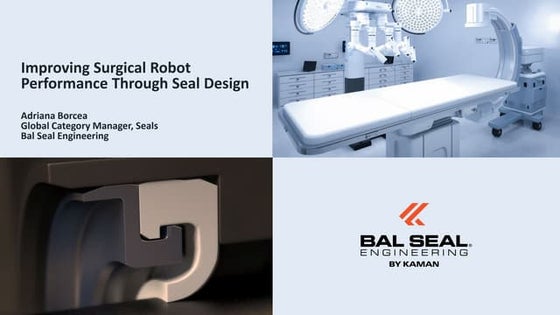



Improving Surgical Robot Performance Through Seal Design.pdfBSEmarketing
Ěý
Ever wonder how something as "simple" as a seal can impact surgical robot accuracy and reliability? Take quick a spin through this informative deck today, and use what you've learned to build a better robot tomorrow.Sppu engineering artificial intelligence and data science semester 6th Artif...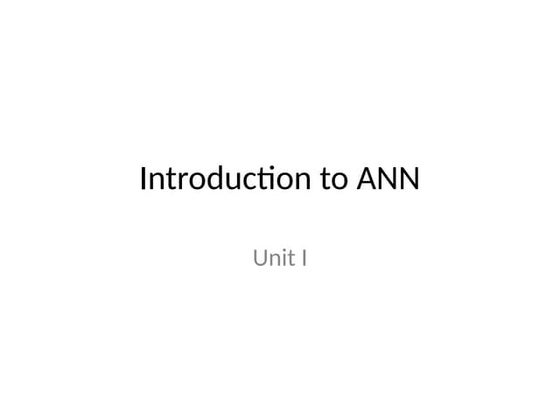



Sppu engineering artificial intelligence and data science semester 6th Artif...pawaletrupti434
Ěý
Sppu University Third year AI&DS Artificial Neural Network unit 1Practice Head Torpedo - Neometrix Defence.pptx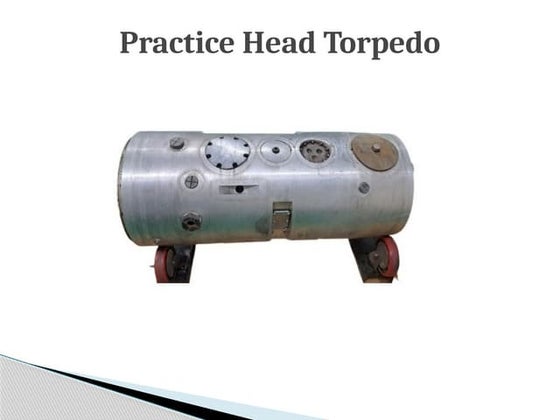



Practice Head Torpedo - Neometrix Defence.pptxNeometrix_Engineering_Pvt_Ltd
Ěý
About
Practice Head is assembled with Practice Torpedo intended for carrying out exercise firings. It is assembled with Homing Head in the forward section and oxygen flask in the rear section. Practice Head imparts positive buoyancy to the Torpedo at the end of run. The Practice Head is divided into two compartments viz. Ballast Compartment (Houses Light Device, Depth & Roll Recorder, Signal Flare Ejector, Discharge Valve, Stop Cock, Water discharge Valve, Bellow reducing Valve, Release Mechanism, Recess, Bypass Valve, Pressure Equalizer, Float, Sinking Plug etc.) which provides positive buoyancy at the end of run by discharging water (140 ltrs.) filled in the compartment and Instrument compartment (dry), houses (safety & recovery unit and its battery, combined homing and influence exploder equipment, noise maker, bollards & safety valve etc.) The recess in Ballast compartment houses the float which gets inflated at the end of run to provide floatation to the surfaced Torpedo. Several hand holes/recesses are provided on the casing/shell of Practice Head for assembly of the following components:-
a) Signal Flare Ejector Assembly
b) Depth and Roll Recorder Assembly
c) Light Device
d) Pressure equalizer
e) Drain/Discharge Valve assembly
f) Bollard Assembly
g) Holding for Floater/Balloon Assembly
h) Sinking Valve
i) Safety Valve
j) Inspection hand hole
Technical Details:
SrNo Items Specifications
1 Aluminum Alloy (AlMg5)
Casing Body Material: AlMg5
• Larger Outer Diameter of the Casing: 532.4 MM
• Smaller Outer Diameter of the Casing: 503.05 MM
• Total Length: 1204.20 MM
• Thickness: 6-8 mm
• Structural Details of Casing: The casing is of uniform outer dia for a certain distance from rear side and tapered from a definite distance to the front side. (Refer T-DAP-A1828-GADWG-PH- REV 00)
• Slope of the Tapered Portion: 1/8
• Mass of Casing (Without components mounting, but including the ribs and collars on the body): 58.5 kg
• Maximum External Test Pressure: 12 kgf/cm2
• Maximum Internal Test Pressure:-
i. For Ballast Compartment: 2 kgf/cm2
ii. For Instrument Compartment: 1 kgf/cm2
• Innerspace of casing assembly have 2 compartments:-
i. Ballast Compartment and
ii. Instrument Compartment
• Cut outs/ recesses shall be provided for the assembly of following components.
a) Signal Flare Ejector Assembly
b) Depth and Roll Recorder Assembly
c) Light Device
d) Pressure Equalizer
e) Drain/ discharge valve assembly
2 Front Side Collar Material: AlMg5
• Maximum Outer Diameter: 500 MM
• Pitch Circle Diameter: 468 MM
• All Dimensions as per drawing T-DAP-A1828-MDWG-C&R-REV-00
Application:
In a torpedo, the ballast components and instrument compartment play crucial roles in maintaining stability, control, and overall operational effectiveness. The ballast system primarily manages buoyancy and trim, ensuring that the torpedo maintains a stable trajectory underwater.Wireless-Charger presentation for seminar .pdf



Wireless-Charger presentation for seminar .pdfAbhinandanMishra30
Ěý
Wireless technology used in chargerTurbocor Product and Technology Review.pdf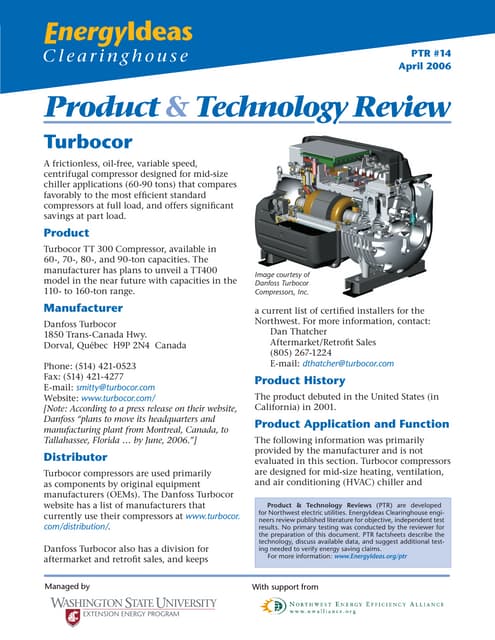



Turbocor Product and Technology Review.pdfTotok Sulistiyanto
Ěý
High Efficiency Chiller System in HVACDefining the Future of Biophilic Design in Crete.pdf



Defining the Future of Biophilic Design in Crete.pdfARENCOS
Ěý
Biophilic design is emerging as a key approach to enhancing well-being by integrating natural elements into residential architecture. In Crete, where the landscape is rich with breathtaking sea views, lush olive groves, and dramatic mountains, biophilic design principles can be seamlessly incorporated to create healthier, more harmonious living environments.
Indian Soil Classification System in Geotechnical Engineering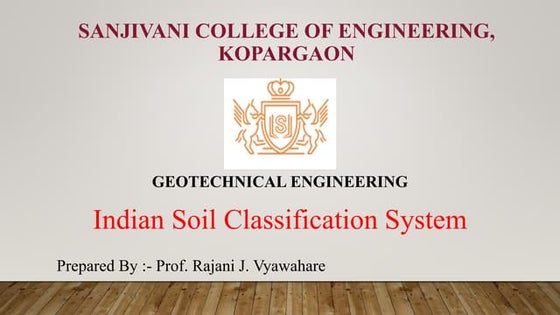



Indian Soil Classification System in Geotechnical EngineeringRajani Vyawahare
Ěý
This PowerPoint presentation provides a comprehensive overview of the Indian Soil Classification System, widely used in geotechnical engineering for identifying and categorizing soils based on their properties. It covers essential aspects such as particle size distribution, sieve analysis, and Atterberg consistency limits, which play a crucial role in determining soil behavior for construction and foundation design. The presentation explains the classification of soil based on particle size, including gravel, sand, silt, and clay, and details the sieve analysis experiment used to determine grain size distribution. Additionally, it explores the Atterberg consistency limits, such as the liquid limit, plastic limit, and shrinkage limit, along with a plasticity chart to assess soil plasticity and its impact on engineering applications. Furthermore, it discusses the Indian Standard Soil Classification (IS 1498:1970) and its significance in construction, along with a comparison to the Unified Soil Classification System (USCS). With detailed explanations, graphs, charts, and practical applications, this presentation serves as a valuable resource for students, civil engineers, and researchers in the field of geotechnical engineering. Cloud Cost Optimization for GCP, AWS, Azure



Cloud Cost Optimization for GCP, AWS, Azurevinothsk19
Ěý
Reduce Cloud Waste across AWS, GCP, Azure and Optimize Cloud Cost with a structured approach and improve your bottomline or profitability. Decide whether you want to outsource or manage it in house. The Golden Gate Bridge a structural marvel inspired by mother nature.pptx



The Golden Gate Bridge a structural marvel inspired by mother nature.pptxAkankshaRawat75
Ěý
The Golden Gate Bridge is a 6 lane suspension bridge spans the Golden Gate Strait, connecting the city of San Francisco to Marin County, California.
It provides a vital transportation link between the Pacific Ocean and the San Francisco Bay.
AI ppt on water jug problem by shivam sharma



AI ppt on water jug problem by shivam sharmaShivamSharma588604
Ěý
this ppt is made on the topic of water jug problem.Von karman Equation full derivation .pdf



Von karman Equation full derivation .pdfEr. Gurmeet Singh
Ěý
Von karman Equation full derivation
By Er. GURMEET SINGH
G.C.E.T JAMMU
Contact: gurmeet.b.tech@gmail.com
M.tech Transportation Engineering TASK-DECOMPOSITION BASED ANOMALY DETECTION OF MASSIVE AND HIGH-VOLATILITY SES...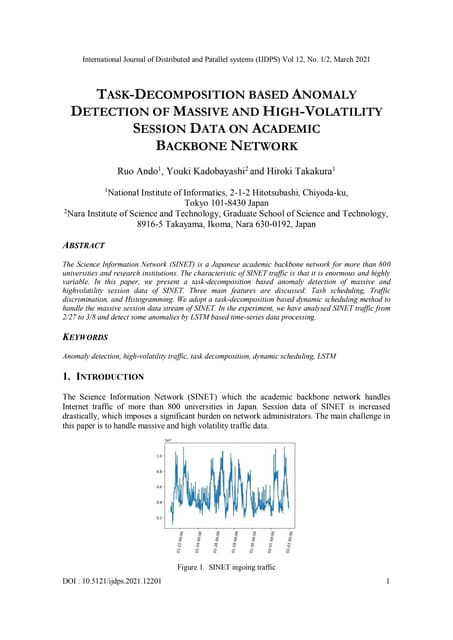



TASK-DECOMPOSITION BASED ANOMALY DETECTION OF MASSIVE AND HIGH-VOLATILITY SES...samueljackson3773
Ěý
The Science Information Network (SINET) is a Japanese academic backbone network for more than 800
universities and research institutions. The characteristic of SINET traffic is that it is enormous and highly
variableAI-Powered Power Converter Design Workflow.pdf



AI-Powered Power Converter Design Workflow.pdfAleksandr Terlo
Ěý
Blending human expertise with AI-driven optimization for efficient power converter design.Design of cannal by Kennedy Theory full problem solved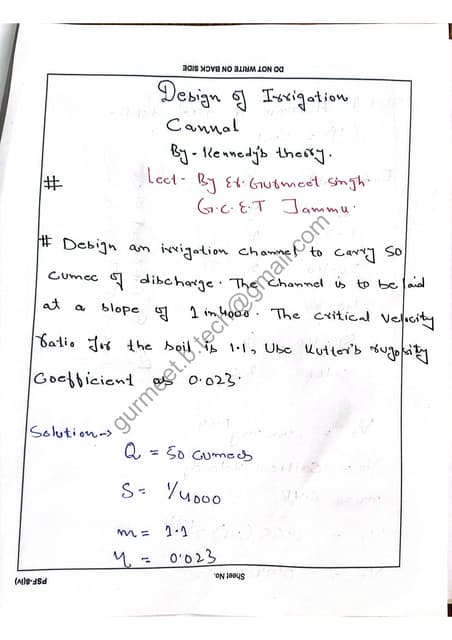



Design of cannal by Kennedy Theory full problem solvedEr. Gurmeet Singh
Ěý
Design of cannal by Kennedy Theory
By Er Gurmeet Singh
G.C.E.T JAMMU
CONTACT: Gurmeet.b.tech@gmail.com
Air Conditioning system and types
- 2. Presentation Air Conditioning System & types
- 3. I’m going to discuses • Introduction • Principles of air-conditioning • Cooling cycle • Type of air-conditioning • Application
- 4. INTRODUCTION Definition - Air conditioning is the process of altering the properties of air to more favorable conditions. The control of these conditions may be desirable to maintain the health and comfort of the occupants, or to meet the requirements of industrial processes irrespective of the external climatic conditions
- 5. PRINCIPLES OF AIR- CONDITIONING • The low-pressure liquid refrigerant absorbs heat as it vaporizes in the evaporator coils. The process described above is the AIR-CONDITIONING System. • It is the system on which virtually all modern Air- Conditioning and refrigeration is based.
- 7. Air-Conditioning Cycle • The refrigerant comes into the compressor as a low-pressure gas, it is compressed and then moves out of the compressor as a high-pressure gas. • The gas then flows to the condenser. Here the gas condenses to a liquid, and gives off its heat to the outside air. • The liquid then moves to the expansion valve under high pressure. This valve restricts the flow of the fluid, and lowers its pressure as it leaves the expansion valve. • The low-pressure liquid then moves to the evaporator, where heat from the inside air is absorbed and changes it from a liquid to a gas. • As a hot low-pressure gas, the refrigerant moves to the compressor where the entire cycle is repeated.
- 9. Types of Air Conditioning System • Window air-conditioning system • Split air-conditioning system • Centralized air-conditioning system • Package air-conditioning system
- 10. Window Air-Conditioning System It is a single unit that is assembled in a casing where all the components are located This Air-Conditioning unit has a double shaft fan motor with fans mounted on both sides of the motor. One at the evaporator side and the other at the condenser side.
- 11. Part of Window AC • Front Panel • Indoor Side Components • Outdoor Side Components
- 12. Front Panel • The front panel is the one that is seen by the user from inside the room where it is installed • The front panel has adjustable horizontal and vertical(some models) louvers where the direction of air flow are adjustable to suit the comfort of the users • The fresh intake of air called VENT (ventilation) is provided at the panel in the event that user would like to have a certain amount of fresh air from the outside.
- 13. Indoor Side Components • Cooling Coil • Fan Blower • Operation Panel • Filter Drier
- 14. Outdoor Side Components • Compressor • Condenser Coil • Propeller Fan • Fan Motor • Drain Pan
- 16. Split Air-Conditioning System • The split air conditioner comprises of two parts: the outdoor unit and the indoor unit • The outdoor unit, fitted outside the room, houses components like the compressor, condenser and expansion valve • The indoor unit comprises the evaporator or cooling coil and the cooling fan. (For this unit you don’t have to make any slot in the wall of the room). • Further, the present day split units have aesthetic looks and add to the beauty of the room. The split air conditioner can be used to cool one or two rooms
- 18. Centralized Air-Conditioning System • The outdoor unit contains the condenser coil, compressor, electrical components and a fan. • The evaporator coil, which is usually installed on top of the gas furnace inside the home. • A series of pipes, or refrigeration lines, connecting the inside and outside equipment. • Refrigerant, the substance in the refrigeration lines that circulates through the indoor and outdoor unit. • Ducts that serve as air tunnels to the various spaces inside your home. • A thermostat or control system to set your desired temperature.
- 19. Central AC’s main Components • The condenser – is the unit that sits outside your home and contains the compressor, condensing coil, fan and motor and all the system’s electrical components. • The evaporator – also known as the A coil - because of it’s A shape, is installed inside your furnace’s duct system. This coil must be properly matched to the outside unit and should always be replaced when you purchase a new cooling system in order to maintain maximum system efficiency and prolong the life of your new air conditioner. • The line set – The line set is the copper tubing that connects the evaporator to the condenser. The black insulation or armaflex on this tubing keeps it from sweating as the cold refrigerant passes through it. The line set can normally be reused as long as it is properly sized, has no leaks and we are using the same type of refrigerant. We will cover the two types of refrigerants in just a moment. • The blower – The blower is provided by your heating system, in other words, your furnace. This is arguably the most important part of your cooling system. Everything your new cooling system is capable of doing is dependant upon proper airflow through the A coil. If your blower is old or dirty it may move too little air and the cooling system will freeze up. Poor airflow will cause your lower level to get very cold and your upper floors to get very warm. This is a very common problem and one reason many customers consider replacing older furnaces when they replace their cooling system – the heat works fine but the airflow is marginal. However, if your furnace blower is in good shape replacing your heating system is not necessary.
- 21. Packaged Air Conditioner • Packaged air conditioners are similar to window air conditioners since all the components are housed in one single unit. Unlike window A/Cs, however, packaged air conditioners are installed outside your home, usually on the roof, and can cool the whole building. Some even contain a heating system, such as a furnace, eliminating the need for a separate furnace indoors
- 22. Two types of condensers are used in packaged systems • Air-cooled – These condensers are cooled by the surrounding air. These are more common for residential use. • Water-cooled – These condensers require a cooling tower, so they’re used primarily for large commercial applications where water is plentiful.
- 23. Packaged Air Conditioners with Air Cooled Condensers • In this packaged air conditioners the condenser of the refrigeration system is cooled by the atmospheric air. There is an outdoor unit that comprises of the important components like the compressor, condenser and in some cases the expansion valve (refer the figure below). The outdoor unit can be kept on the terrace or any other open place where the free flow of the atmospheric air is available. The fan located inside this unit sucks the outside air and blows it over the condenser coil cooling it in the process. The condenser coil is made up of several turns of the copper tubing and it is finned externally. The packaged ACs with the air cooled condensers are used more commonly than the ones with water cooled condensers since air is freely available it is difficult maintain continuous flow of the water. • The cooling unit comprising of the expansion valve, evaporator, the air handling blower and the filter are located on the floor or hanged to the ceiling. The ducts coming from the cooling unit are connected to the various rooms that are to be cooled.
- 25. Application of AC • The main function of an air conditioning system is mainly to produce cooling inside the room • Removal of heat • Decrease temperature for comfort • Use in offices, home & class rooms • The central air conditioning plants or the systems are used when large buildings, hotels, theaters, airports, shopping malls etc. are to be air conditioned completely.
- 26. Any Questions??
- 27. Thank You







